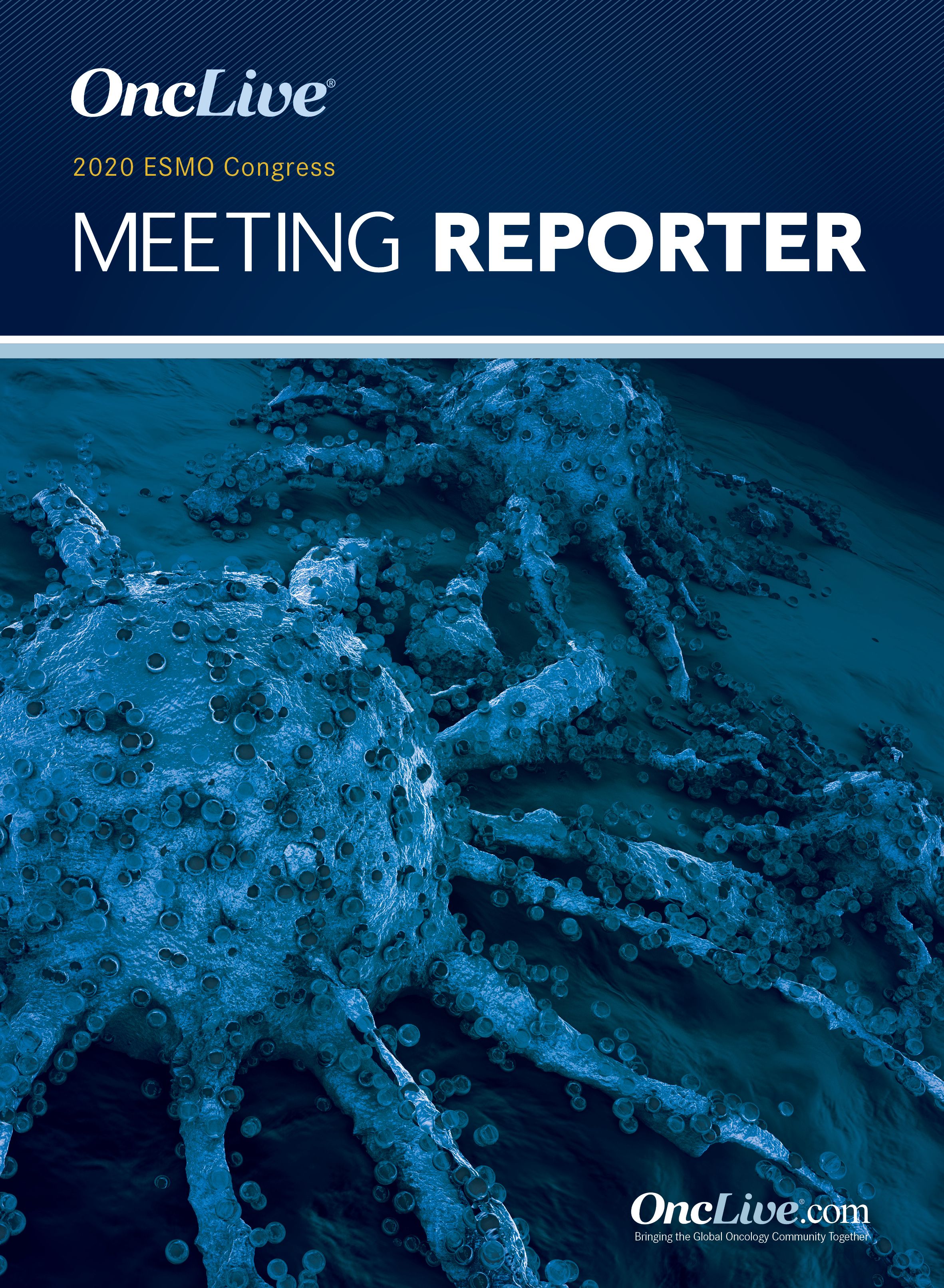Novel PD-1/PD-L1 Inhibitor Combo Promotes Antitumor Activity in Urothelial Carcinoma
The investigational PD-L1 inhibitor BGB-A333 in combination with the PD-1 inhibitor tislelizumab demonstrated marked antitumor activity, durable clinical responses, and a tolerable safety profile in patients with urothelial carcinoma.
Juan Martin-Liberal, MD, PhD

The investigational PD-L1 inhibitor BGB-A333 in combination with the PD-1 inhibitor tislelizumab demonstrated marked antitumor activity, durable clinical responses, and a tolerable safety profile in patients with urothelial carcinoma, according to findings from the phase 1/2 BGB-900-101 study that were presented during the 2020 ESMO Congress.1
In the overall patient population (n = 12) of the phase 2B dose-expansion portion of the study, the combination induced an overall response rate (ORR) of 42% (95% CI, 15.2%-72.3%), consisting of 3 complete responses (CRs), and 2 partial responses (PRs). Additionally, 4 patients achieved stable disease (SD), 2 patients had progressive disease, and 1 patient was not evaluable.
Among patients with PD-L1–high urothelial carcinoma, the ORR was 67% (95% CI, 22.3%-95.7%), with CRs in 2 patients, PRs in 2 patients, and SD in 2 patients. The ORR in patients with PD-L1–low disease was 17%.
The median duration of response was 9.1 months (95% CI, 6.0-9.6).
“Simultaneous PD-L1 and PD-1 blockade has been hypothesized to provide synergistic antitumor effects, as inhibitors may have distinct mechanisms of action,” said lead study author Juan Martin-Liberal, MD, PhD, a consultant medical oncologist in the Melanoma, Sarcoma, and Genitourinary Tumors Unit at the Institut Catala d’Oncologia Hospitalet, in Barcelona, Spain. “[Although] these differences should be taken cautiously given the sample size, these data have provided insights into combining tislelizumab, a clinical stage anti–PD-1 antibody, with anti–PD-L1 antibodies.”
In previous findings from the part 1A dose-escalation portion of the study, the recommended dose was determined to be 1350 mg of intravenous (IV) BGB-A333 and 200 mg of IV tislelizumab every 3 weeks.2
Patients who were eligible for the phase 2B portion of the study had to have locally advanced or metastatic urothelial carcinoma that had progressed after at least 1 platinum-containing regimen. These patients received the recommended dose for a median duration of 6.2 months. The median follow-up was 10 months.
Patients had a median of 69.5, and 92% of patients were male. Ten patients had received 1 prior line of systemic therapy.
PD-L1–high status was defined as PD-L1 staining on 25% or more of tumor or immune cells with the VENTANA SP263 assay.
Additionally, radiographic assessments were performed every 9 weeks during the first year of treatment and every 12 weeks thereafter.
Additional findings showed that disease control rates (DCRs) also varied based on PD-L1 status. In the overall patient population, the DCR was 75% (95% CI, 42.8%-94.5%). In PD-L1–high patients, the DCR was 100% (95% CI, 54.1%-100%) compared with 50% (95% CI, 11.8%-88.2%) in PD-L1–low patients.
The median progression-free survival (PFS) was 6.1 months in the overall population (95% CI, 1.9-11.0); a total of 10 patients (83.3%) experienced a PFS event. In the PD-L1–high subgroup, the median PFS was 10 months (95% CI, 4.0-11.0) compared with 4.1 months (95% CI, 1.2-11.5) in the PD-L1–low subgroup. Moreover, PFS events occurred in 4 (66.7%) and 6 (100%) patients, respectively.
Regarding safety across the entire study population (n = 39), 20 patients experienced any-grade treatment-related adverse effects (TRAEs). The most common TRAEs were fatigue (n = 5), maculopapular rash (n = 4), myalgia (n = 4), nausea (n = 4), pruritis (n = 3), asthenia (n = 2), back pain (n = 2), and diarrhea (n = 2). A total of 7 patients experienced a grade 3 or higher TRAE, including 1 report of fatigue and 1 report of maculopapular rash.
Immune-related AEs occurred in 2 patients who were enrolled in the phase 2B portion of the study and consisted of grade 3 endocrine disorders, grade 3 hypophysitis, grade 2 musculoskeletal and connective tissue disorder, and grade 2 myositis.
No patients experienced a fatal TRAEs.
Ultimately, the safety profile of the combination was consistent with previously reported findings across multiple tumor types, concluded Martin-Liberal.
References:
- Martin-Liberal H, Fong P, Moreno V, et al. BGB-A333, an anti-PD-L1 monoclonal antibody, in combination with tislelizumab in patients with urothelial carcinoma. Ann Oncol. 2020;31(4). Abstract: 535MO.
- Desai J, Voskoboynik M, Markman B, et al. Preliminary safety and efficacy data of BGB-A333, an anti-PD-L1 monoclonal antibody, alone and in combination with tislelizumab in patients with advanced solid tumors. Cancer Research. 2020;80(16). doi:10.1158/1538-7445.AM2020-CT253




